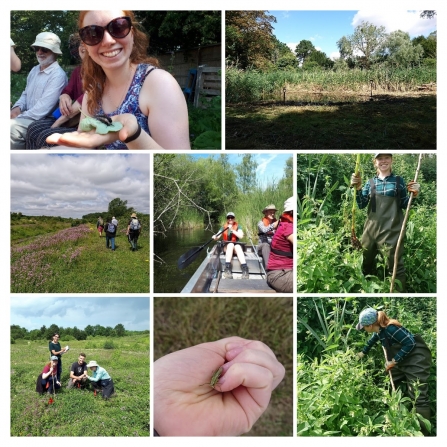My name is Imogen and I started my internship with the Monitoring & Research team in July and will be finishing in September. I have always been interested in nature and would often volunteer with my local conservation group at home (near Winchester). Studying at the University of Cambridge really expanded my interest in ecology and conservation, the field trip to Pembrokeshire being a real highlight; I got to see so much wildlife that I hadn’t seen before, including rare sea mice and sea potatoes!
I first came into contact with the Wildlife Trust BCN in my final year of University. I was handed the daunting task of analysing vast quantities of data from their bat surveys in Gamlingay and Waresley & Gransden Woods for my dissertation. This intrigued me to go and visit these reserves and to find out more about what the Trust does. On learning about their internship opportunity, I leapt at the idea, thinking that it would be a great way to kick start my summer as a fresh ecology graduate.
I have thoroughly enjoyed my internship so far, getting up to a variety of tasks inside and outside the office. Out in the field, I tried on some waders for the first time whilst pulling up the invasive Himalayan balsam plant. I have been rowing on the lake at Felmersham, carrying out aquatic plant surveys with a bathyscope. I have learnt the Latin names for plant species at Old Sulehay (Northants) due to lots and lots and lots of repetition! I have also discovered many beautiful areas of nature that I did not even know existed, including the tucked away bird sanctuary on Adam’s Road, Cambridge.


